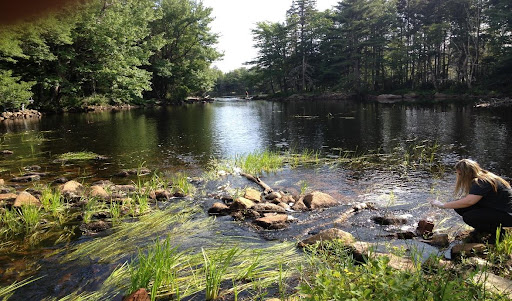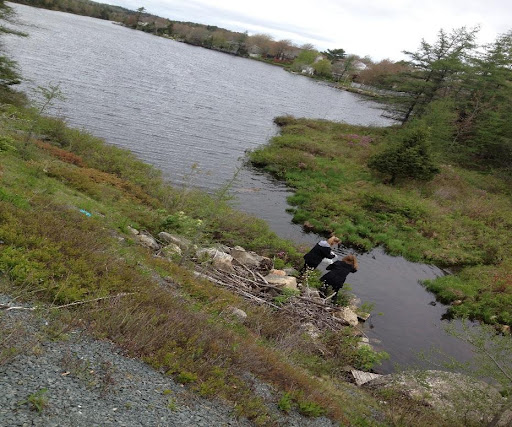
Report on Upper Nine Mile River Watershed —
Surface Water Quality Assessment
Findings from a surface water quality study of streams conducted across the Upper Nine Mile River watershed situated north of the Five Bridge Lakes Wilderness area show no apparent chemistry concerns from local industry, construction, or residential / commercial pollution. The study, conducted and recently released by the FBWHT, includes data collected from 2014 to 2023. The study area is situated north of HWY 103 within the communities of Timberlea and Lakeside, and south of Hammonds Hammonds Plains Rd from Highland Park to Kingswood subdivisions.
Project lead and Trust Board member Peter Lund, a professional Hydrogeologist, believes it’s important to track surface water quality regularly as a general indicator of the whole eco-system’s health.
“Studying the surface water quality tells us about the overall health of the river, the watershed, and the land around it. We always want to make sure the wilderness area and our streams and lakes are protected and monitored regularly. That way, contamination or problems can be assessed before danger to wildlife and fish habitat occur,” says Lund.

The study involved collecting water samples at 11 strategic locations for select chemical analyses of general chemistry, metals, petroleum hydrocarbons and bacteria (fecal coliforms and e-coli), along with field measurements of pH, temperature, dissolved oxygen and conductivity. Petroleum hydrocarbons were not detected. There were no consistent regulatory guideline exceedences of the chemistry parameters analyzed, with the exception of aluminum and iron, which are elevated across the province due to shallow permeable overburden and slightly acidic waters. There were occasional guideline exceedences of cadmium, copper, lead and zinc across the watershed. It is noted though that the oxygen levels were low and temperature in the streams were high in the summer (20 degrees C) at all sampling locations, which is not healthy for fish, but not uncommon in streams in the summer. It is also noted that fecal coliforms / e-coli bacteria were present throughout the year at all sample locations.
Water sampling within the wilderness area continues to be a regular activity of the FBWHT.